
Filey is a seaside town and civil parish in North Yorkshire, England. It is located between Scarborough and Bridlington on Filey Bay. Although it was a fishing village, it has a large beach and became a popular tourist resort. According to the 2011 UK census, Filey parish had a population of 6,981, in comparison to the 2001 UK census population figure of 6,819, and a population of 6,870 in 1991.

Helmsley is a market town and civil parish in North Yorkshire, England. Historically part of the North Riding of Yorkshire, the town is located at the point where Ryedale leaves the moorland and joins the flat Vale of Pickering.

Kirkbymoorside is a market town and civil parish in North Yorkshire, England. It is 25 miles (40.2 km) north of York, It is also midway between Pickering and Helmsley, on the edge of the North York Moors National Park. It had a population of 3,040 in the 2011 census.

Cuthbert Brodrick FRIBA was a British architect, whose most famous building is Leeds Town Hall.
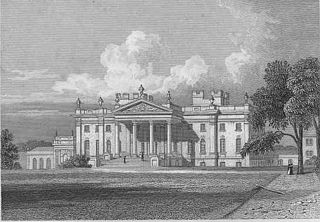
Duncombe Park is the seat of the Duncombe family who previously held the Earldom of Feversham. The title became extinct on the death of the 3rd Earl in 1963, since when the family have continued to hold the title Baron Feversham. The park is situated one mile south-west of Helmsley, North Yorkshire, England and stands in 300 acres (120 ha) of parkland. The estate has a commanding location above deeply incised meanders of the River Rye within the North York Moors National Park.

Healey is a small village and civil parish in the Harrogate district of North Yorkshire, England. It is situated in the valley of the River Burn, to the immediate west of Fearby. It is about three miles west of Masham in the Nidderdale Area of Outstanding Natural Beauty. There are several holiday cottages and four Grade II Listed buildings, one of which is Healey Mill, a former corn mill.
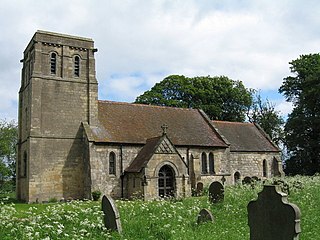
Moor Monkton is a village and civil parish in the Harrogate district of North Yorkshire, England. It is situated on the River Nidd and 7 miles (11 km) north-west from York city centre.

Helmsley railway station served the market town of Helmsley in North Yorkshire from 1871 until 1964, although the regular passenger service ceased in 1953. Helmsley station was nearly 15 miles (24 km) from Pilmoor station on the East Coast Main Line, and 12 miles (19 km) from Pickering.
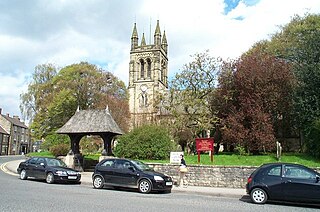
The Church of All Saints is an Anglican parish church serving the town of Helmsley in North Yorkshire, England. It is located between the north-west corner of the market square, and Castlegate, on the B1257 road north of Helmsley Castle. Dedicated to All Saints, it has been part of the Church of England since the Reformation. It is one of four churches in the same benefice: Sproxton, Rievaulx, and East Moors. The church was granted Grade II* listed building status on 4 January 1955.
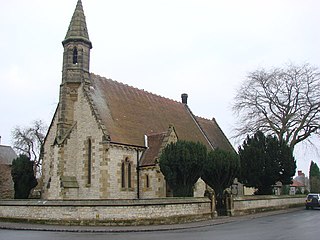
St Saviour's Church, Harome is a Grade II listed parish church in the Church of England in Harome, North Yorkshire.

Corn exchanges are distinct buildings which were originally created as a venue for corn merchants to meet and arrange pricing with farmers for the sale of wheat, barley, and other corn crops. The word "corn" in British English denotes all cereal grains, such as wheat and barley. With the repeal of the Corn Laws in 1846, a large number of corn exchanges were built in England, particularly in the corn-growing areas of Eastern England.

The Old Town Hall, Whitby is a building on the Kirkgate section of Church Street, in the Old Town area of Whitby, North Yorkshire, England.
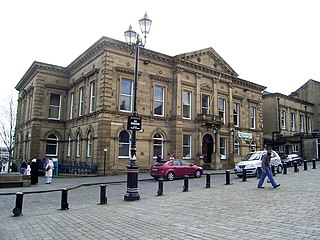
Batley Town Hall is a municipal facility in the Market Place in Batley, West Yorkshire, England. It is a Grade II listed building.

Settle Town Hall is a municipal building in Cheapside in Settle, North Yorkshire, England. The structure, which was the meeting place of Settle Rural District Council, is a Grade II listed building.

South Cave Town Hall is a municipal building in the Market Place, South Cave, East Riding of Yorkshire, England. The building, which is the meeting place of South Cave Parish Council, is a Grade II listed building.
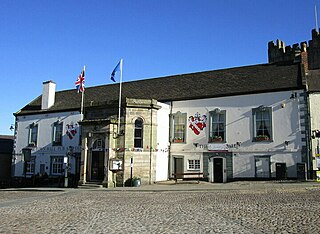
Richmond Town Hall is a municipal building in the Market Place, Richmond, North Yorkshire, England. The structure, which is the meeting place of Richmond Town Council, is a grade II listed building.

Northallerton Town Hall is a municipal building in the High Street, Northallerton, North Yorkshire, England. The structure, which is the meeting place of Northallerton Town Council, is a grade II listed building.
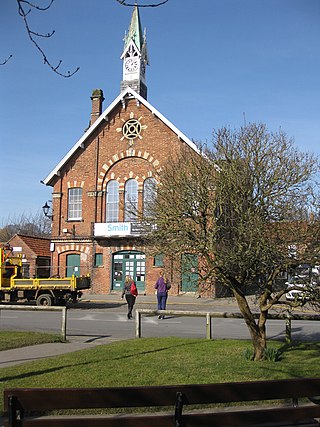
Easingwold Town Hall is a municipal building in the Market Place in Easingwold, North Yorkshire, England. The structure was used as an events venue and is now used as a commercial printing centre, producing The Easingwold Advertiser & Weekly News.

Stokesley Town Hall is a municipal building in the Market Place in Stokesley, North Yorkshire, England. The structure, which accommodates the offices and meeting place of Stokesley Town Council, is a grade II listed building.




















